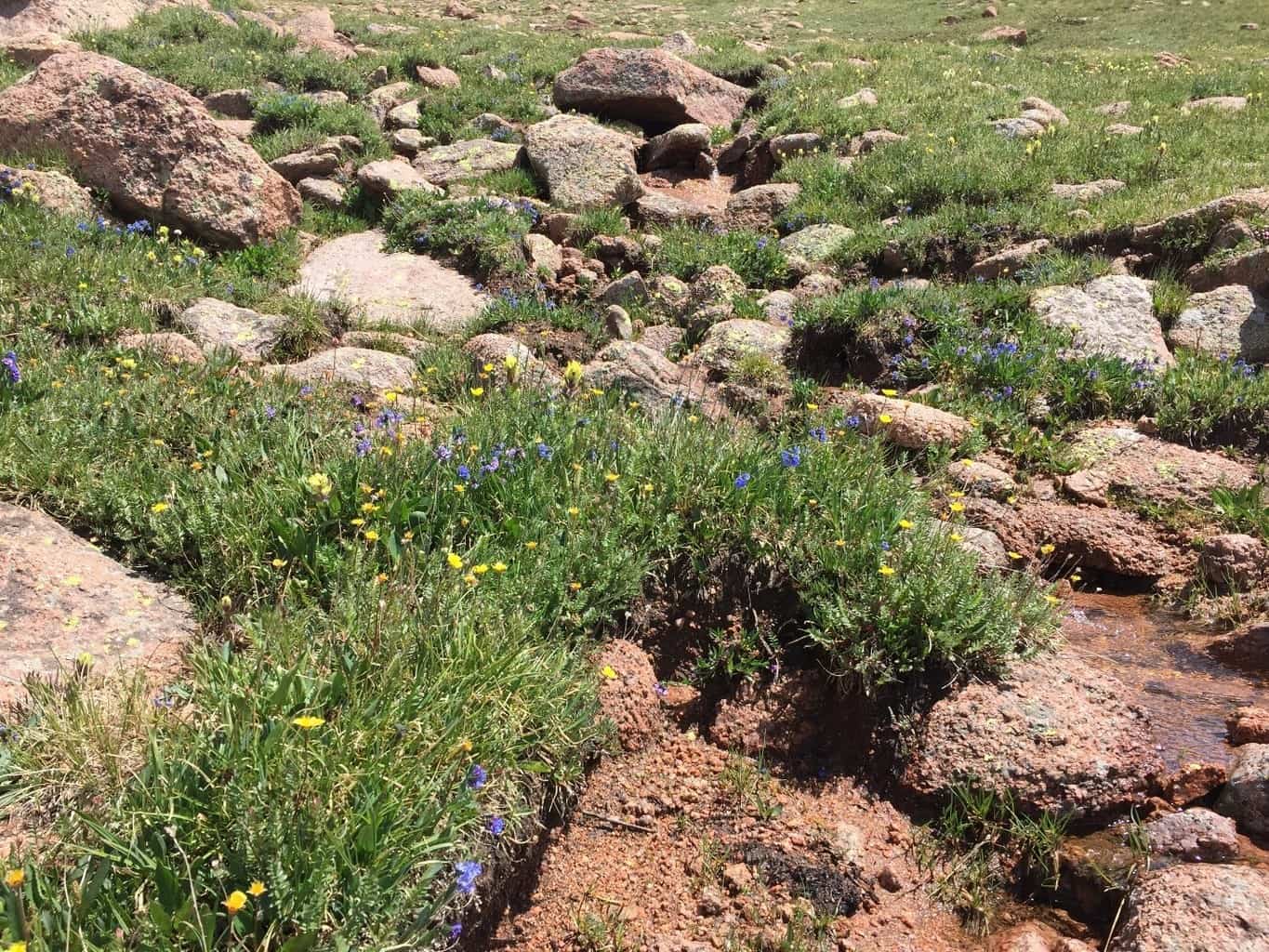
Most of us don’t think of endemics or even know what the word endemic means. The basic definition, provided by dictionary.com is, “1. Natural to or characteristic of a specific people or place; native; indigenous; 2. Belonging exclusively or confined to a particular place.” Endemic species are one of a kind, due to it only being located within certain regions and not located anywhere else. Pikes Peak is one of those special regions. Pikes Peak has very different soil types than any other area I have hiked around, so I can see how it’s possible for certain species being found within this region and nowhere else.
Earlier this month I got to aid with the botanical NEPA (National Environmental Policy Act) analysis along a possible re-route for the Devils Playground trail. This trail starts from the Crags/Devils Playground junction, heading up towards Pikes Peak Highway, then after the highway to the summit. This process is one of many processes that must occur before the last phase, which is constructing the new trail. This important phase is to make sure us trail designers are not impacting any rare species or other sensitive natural resources.

Lots of Mertensia alpina plus other alpine plants.
Pikes Peak is a rare area with a few endemic plants. Some of those plants are Telesonix Jamesii, a very unique and gorgeous wild flower. Growing only within the cracks of the crags. This vibrant pink flower is in every fine crack of the rocks. Oreoxis humilis, more commonly known as the Pikes Peak Spring Parsley, was widely dispersed along the slopes of the alpine tundra. Finally, Mertensia alpina, or Alpine Bluebells. Again endemic to the Pikes Peak region. This beautiful bluebell differs slightly from the other bluebells in that its reproductive system is within the flower and not protruding out.
I can say of the many mountains I have been to and the many times I have been up in the alpine, these species have not been seen, nor recorded by specialists anywhere else. This is why it is so important for hikers to remember not step on the tundra. Colorado’s alpine tundra alone has roughly 300 endemic species, so again remember to keep those feet on the brown (preferably the most impacted “brown” area) and not on the green. It takes roughly 5 steps to kill the tundra and many, many years for it to grow back, if it even does. These endemic species are also why it is not favorable to pick wildflowers, for the density decreases a plant only found within a specific region; therefore, leading to its untimely extinction.








